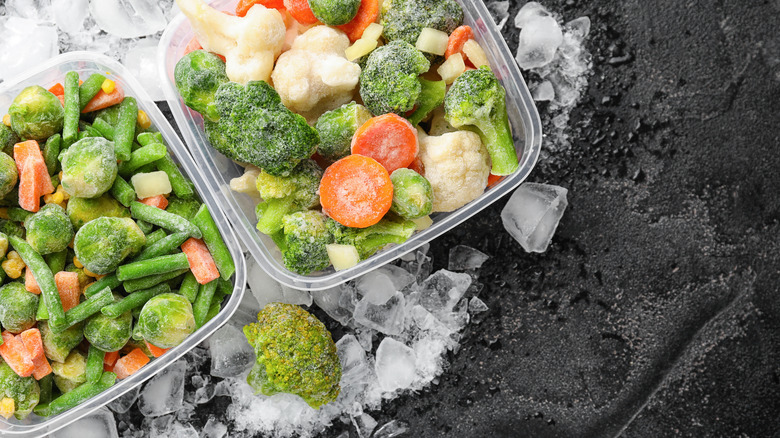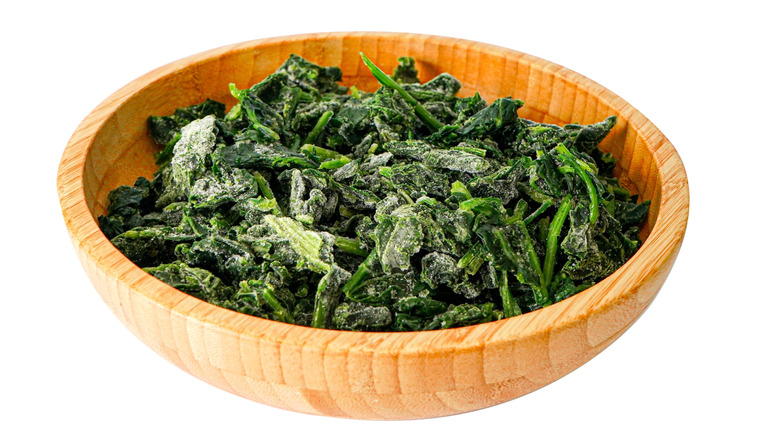The Mistake That's Ruining Your Frozen Veggies
Some people turn up their noses at frozen veggies, but they can be just as delicious as their fresh counterparts when prepared correctly. From peas to corn to okra, there are plenty of frozen vegetables that taste great when properly cooked while giving you the convenient ability to store them for longer periods of time. If you've shied away from frozen veggies because they always turn out limp, you're likely making the common mistake of letting them thaw before cooking.
Veggies can be taken from the freezer and added right into whatever you're making, whether it's chili, gumbo, or a stir-fry. This helps frozen veggies stay crispy and crunchy during the cooking process rather than turning droopy. The water in vegetables expands when frozen, which causes breakage in the normally rigid cellular structure of the vegetables. When thawed, this lack of structure can lead to a soggier, mushier consistency. By skipping the defrosting process, your frozen veggies will stay firmer and crunchier when cooked.
Do certain frozen veggies need to be thawed before cooking?
While most frozen veggies can be added directly to whatever dish you're using them in, there are some exceptions to that rule. Leafy greens like spinach have a particularly high moisture content, which means if you add them to a dish frozen, they're going to release a lot of liquid. If you don't want excess water in your dish, it's best to defrost the frozen spinach ahead of time.
There are several ways to go about thawing frozen spinach. You can put it in the fridge or the microwave or run it under warm water. Whichever method you choose, make sure that you get the excess liquid out of the spinach by placing it in a paper towel-lined strainer and giving it a good squeeze.
By preparing frozen veggies the right way, either by cooking them while still frozen or thawing them properly when appropriate, you'll be able to save time and money without compromising on taste and texture.

